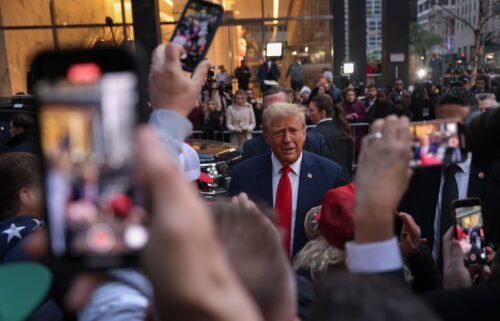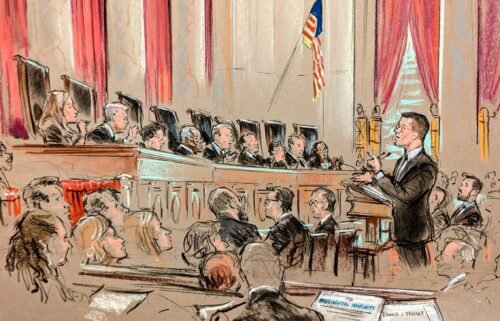Why the Popeyes chicken sandwich tastes like 2020

On an otherwise placid Sunday in Inglewood, California, the scene at the intersection of La Brea and Centinela was one of barely controlled chaos. Queues of dozens of cars extended in both directions from each angle of the corner, stalling traffic and blocking the entrance to the neighboring shopping center. From every direction, people walked — even sprinted — toward their destination: A humble, orange-roofed Popeyes Louisiana Kitchen.
Inside the restaurant, I joined a festive mob of people who stood in a spiral line three layers deep, laughing at their own absurd willingness to spend a perfectly good morning waiting hours for the chance to eat chicken on a bun.
That’s why we were all there, of course: To try the internet’s favorite culinary meme, Popeyes Spicy Chicken Sandwich. Nearly everyone in the store had missed the chance to sample it when the chain first unveiled it; I myself had visited three different locations, only to find each of the stores sold out of the item — before Popeyes announced August 27 it was suspending sales nationwide because of lack of supply.
In the process, Popeyes gave the world a free lesson on how the internet has transformed what was once the relatively controlled process of “rollout” — that is, the introduction of new products, ideas and initiatives into a crowded marketplace — into an ever more volatile and high-stakes game. And it’s important to reflect on the fact that what causes spicy chicken to go viral is also, fundamentally, what put a reality TV host in the White House. Momentum marketing is the new normal, for consumer brands and for candidates, and the impact on our democracy has already been enormous. And the future implications, as social media becomes simply “media,” are incalculable.
Few industries are more experienced at rollouts than the quick-serve restaurant (QSR) industry, which is, after all, less of a food business than a big-budget marketing engine bolted onto a high-test precision logistics transmission. Fast food offerings are developed in labs, fine-tuned in industrial kitchens, sampled in remote individual locations, and a sales range is estimated and contracts are made to suppliers months or even years in advance. Even for a moderately sized chain like Popeyes, which, with more than 3,100 restaurants in 40 states and 30 countries, is around the 20th largest QSR business in the world, the rollout of a new menu item is as complicated and microengineered as a military invasion.
And Popeyes thought it had things well in hand. As Felipe Athayde, Popeyes’ president for the US market, asserted to The New York Times, “We had very aggressively forecasted the demand, and we thought we wouldn’t have any problems at all, at least until the end of September.”
But Popeyes didn’t account for the FOMO-inducing impact of social media, where the desire to try something is often created simply by repeated exposure to other people’s desire to try something. Posts and videos by early samplers sharing the indescribable ecstasy of eating the sandwich prompted others to seek it out and provide their own reviews, which in turn were almost certainly spiced with exaggeration of its deliciousness, because on the Internet, “meh” doesn’t drive clicks like over-the-top delight or extreme revulsion.
Before social media, the spike in interest in the sandwich would likely have been within the bounds of Popeyes’ projections. Our current age of high-velocity momentum marketing — with its attendant cycles of hype, swarm, binge, surge and crash — makes it much more difficult to estimate the lower and upper limits of demand: Attention windows tend to be extremely tight, and anyone seeking to control those windows needs to build massive interest in a short period of time, to take maximum advantage of the period before consumers turn their focus elsewhere.
Naturally, this gives a huge advantage to those with the resources to do saturation promotion, spending to fill the zone with their message to drown out and exclude those of others. But there are options for those with skinnier wallets, like the “fan economy” strategy, which focuses on targeting a narrow but immensely passionate niche in hopes that circumstances shift in a way that causes it to rapidly expand, or the “brush fire” strategy, which microtargets a scattered range of far-flung groups in the hopes that their reactions will coalesce into something that appears all-encompassing and viral (and therefore becomes all-encompassing and viral).
These strategies are already in regular use by brands — but the same effects we’ve seen on product marketing are also impacting politics. Candidates with deep pockets try to spend heavily early, to seem omnipresent and inevitable — this was the Hillary Clinton playbook. Candidates with deeply passionate tribal followings — think Donald Trump and Bernie Sanders — play heavily to their base, in hopes that their low-lying white-hot energy can erupt into other spaces. And then there are brush fire candidates who try to expand the field of play by hitting a wide array of targets: failed ones, like Beto O’Rourke; more successful ones, like Andrew Yang and Pete Buttigieg; and the hardest-working brush fire setter in the 2020 field, Elizabeth Warren, who has a plan for everything and seems intent on building her movement a selfie at a time.
Given how critical social media has become, all of them are playing the same game as Popeyes, Chick-fil-A and Wendy’s. The results are unpredictable.
Back at Popeyes, a woman told me she’d been in line four times — once during the first wave; the second time in the morning at a different Popeyes, which announced to the crowd it hadn’t received its shipment yet; the third time, at this location, only to be shooed away until they were ready to sell at 10:30 — and she’d been waiting in this line for 45 minutes already and was prepared to wait all day if necessary. Her family, she said, was doing a “challenge” in which every member would eat a sandwich and post their reaction. Her brother had already bought sandwiches for all her relatives in Atlanta, even her grandmother. She was the last to go, here in Los Angeles.
Another man admitted he was skipping out on work to be in line, and noted it wasn’t the first frenzy he’d been a part of — he’d been a regular on iPhone lines back when Apple was run by Steve Jobs, that early Svengali of momentum marketing.
The first lady to receive her bag of sandwiches offered to sell one for $10 — “To save y’all an hour.” There were no takers, though another customer waved a receipt and jovially shouted, “I got my lottery ticket right here!” The lady left, cheerily shouting “Happy Chicken Sandwich Day!”
An hour later, I and my sons were finally eating our bounty. The breading was light and crisp, the meat tender, the sauce piquant with a lingering afterburn, the pickles refreshingly zesty. It was certainly better than any other fast food chicken sandwich I’d ever had. But, as my younger son pointed out, “We’ve been here for hours — this is not FAST food, dad.”
He has a point. Is momentum marketing the ultimate expression of the system, or a sign of the system breaking — or both?
I guess we’ll find out in 2020.




